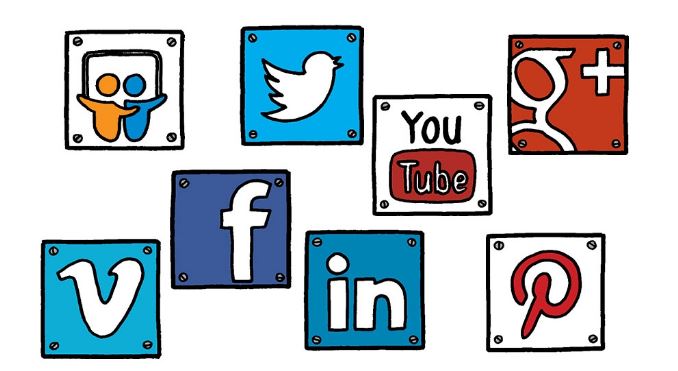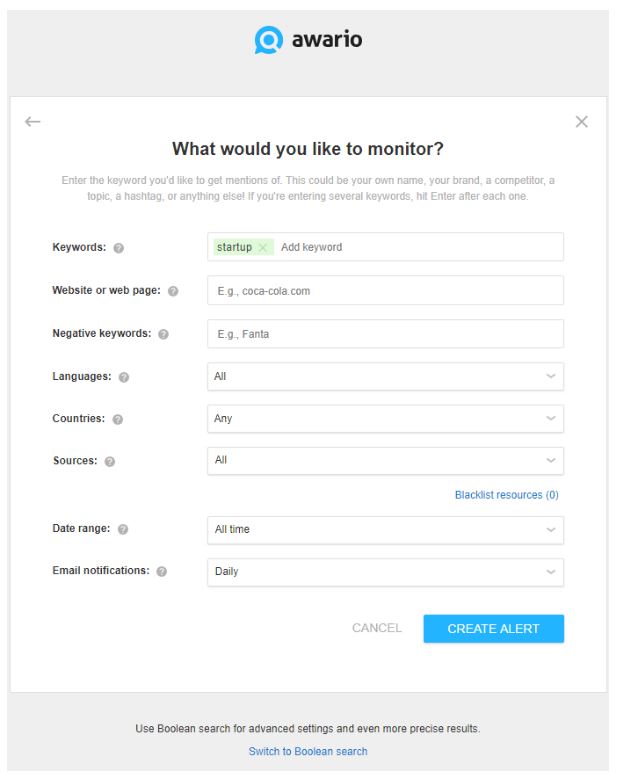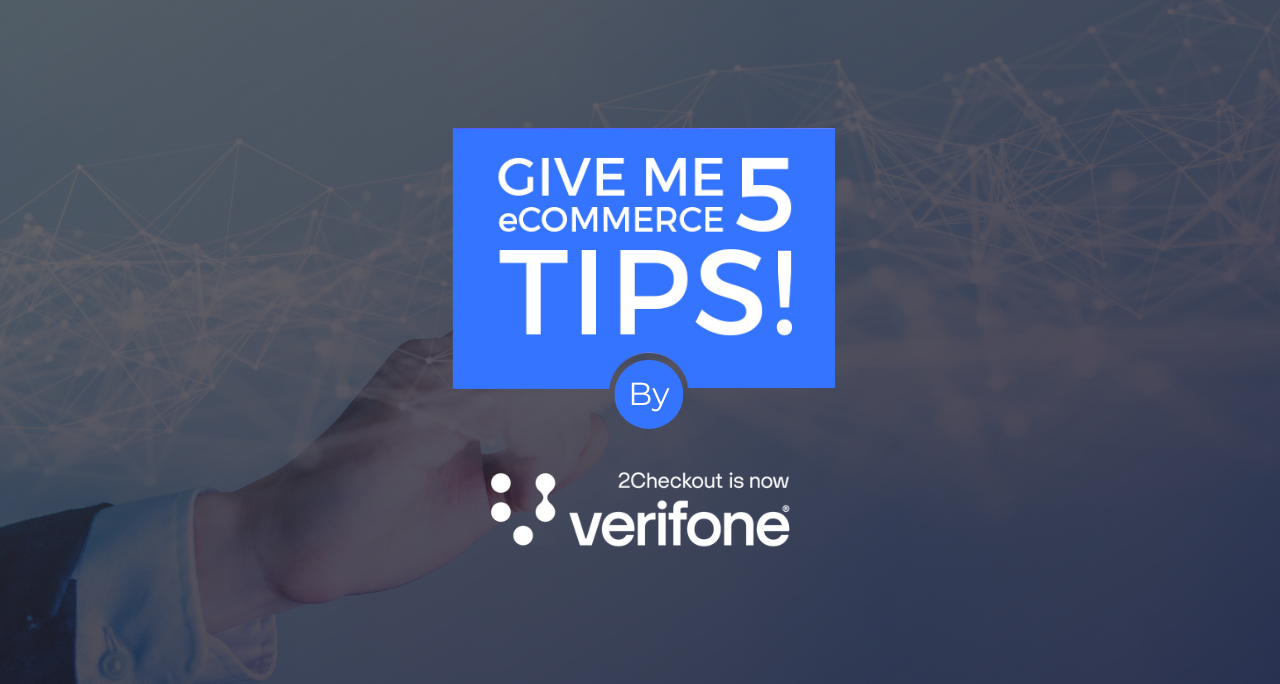So you have a website or a blog, you’ve got an audience which likes your content, you’ve joined an affiliate program and people don’t seem to hate you for it. You even made some money from it. Awesome! Now you must be wondering if there is any way to increase your earnings.
You can benefit from social media in two ways: by promoting the content which you create or putting links directly in your social media posts. Chances are you already use social media to promote your blog or website (if not — what are you waiting for?) But let’s face it – in this day and age people don’t always want to click a link to go to a website where you have to click more links. Nearly 50% of affiliate-referred traffic originates from a mobile device. And you know better than me, most of the time on your phone you’re checking Twitter or Instagram, not reading lengthy blog posts.

This article will be useful for content creators and website owners who want to learn how to market affiliate products through social media. Finding initial audience shouldn’t be a problem for you – there’s already an audience. If there are people who care about your content, they’ll gladly follow you on social media. The question is: how do you get more money from marketing on social media?
There are four major ways social media can affect your affiliate marketing strategy. They can help you:
Learn more about your audience
To be successful in affiliate marketing, you need to know your audience – that seems like the most obvious thing to say, but it doesn’t make it less true. The most effective affiliate marketer is aiming to serve people – find products which are actually interesting to them and tell them why they are useful. To do that, you need to know who these people are.
Social media is an infinite source of information about your audience – and it’s all shared voluntarily and, in most cases, publically. Now, I’m not encouraging you to stalk your readers (although I kind of do in some way). There are more elegant and efficient ways to gain some insight without manually scrolling down someone’s Pinterest.

For example, Awario social media listening tool is a very quick way to learn more about your audience. You put in keywords, it gathers all the mentions of these keywords and analyses them. You can see how many people saw these keywords, how did they react to them and the top influencers who used them.
Now, let’s say you want to choose a product to promote on your website dedicated to startups. First I’d suggest you track people that mention your site to see what they like and dislike about your content. You can use Sentiment metric to do that.
Then try to monitor phrases related to startups, and you’ll get a feeling of what general trends and preferences are in this field. If you still need more info, you can look at the people your readers follow and interact with the most. This should give you a full picture to choose a suitable product for your audience.

Prioritize certain platforms
Depending on your niche, your audience will prefer certain platforms. I know, all these names like Twitter, Facebook, Instagram, and Reddit (don’t forget about Youtube and Snapchat), might sound a bit overwhelming. But you’ll find out that people that read your content and share your interests usually hang out on two or three of these. Again, a social media listening tool could help you analyze which platform is popular among your audience.

General advice on any platform would be:
- to study their guidelines thoroughly before marketing
- to tag brands which you are marketing so that their followers will see your post
- to utilize any feature a platform offers you
- to be genuine and friendly, don’t “pitch” your followers
So now let’s discuss major platforms in more detail and see what their policies are regarding affiliate links.
Facebook is the second most popular social media platform in the world. As good as it sounds, it’s not the most affiliate marketing-friendly platform, but you can still find a way to promote your links there. Set up an official page for your website if for some reason you don’t have one yet. Facebook allows you to put a lot of information about your website, so use it: let people who stumble upon your page by accident know who you are and what you do.
Your Facebook page is your “face” (pun not intended, I promise). Of all your accounts, people will probably look up your Facebook the most. So what you share here is extremely important. It’s better to be quite mean with promotional content (of course, this doesn’t apply if you have a coupon website). The common ratio is 80/20 – that means that out of eight posts, two can be promotional. Compared with your other social media, you should be sharing the least amount of affiliate links there.
As a rule, you shouldn’t post more than three times a day so that doesn’t leave you that many opportunities to post your affiliate links. In general, you should only invest time and efforts in Facebook marketing If you already have an audience, which trusts you and mostly uses Facebook. Otherwise treat it as a platform for sharing and promoting your content and driving more traffic to your website (where you can put as many affiliate links as you want, just don’t go too crazy).

Facebook has no restrictions regarding affiliate links, just don’t forget to disclose the fact that you’re an affiliate. You can write it at the end of the post or simply put #aff or #affiliate, “(affiliate link)”, #ad or #sponsored.
According to eBizMBA, Twitter has more than 3 hundred million estimated unique monthly visitors. If you’re feeling disappointed with Facebook, I have good news for you! On Twitter, you can tweet every 15 minutes – that’s an average lifespan of a tweet. In fact, it’s recommended to tweet no less than five or ten times every day. But the general rule still stands – you can’t expect to make money on Twitter by tweeting sales pitches every 15 minutes – you need to build a relationship. And after you establish a Twitter presence, you can link to relevant affiliate offers without having to worry about getting unfollowed or blocked.
Of course, Twitter has its own peculiarities. I assume you are aware that Twitter limits you in the number of characters you can use – right now the limit is 280 characters. You have to find a way to be natural and genuine and fit in your affiliate link. That’s where URL shorteners come into play. Besides, more often than not, affiliate links are long and contain different numbers and random letters which makes them look less trustworthy. URL shorteners can make your link look more appealing. If you’re an Amazon affiliate, they have an inbuilt link shortener, so you’re good. If not, use TinyURL – it’s one of the few shorteners that allow affiliate links.

Disclosing is quite similar to Facebook – you just use #aff or #affiliate. It’s generally a good rule to use hashtags on Twitter, so if you have some characters left, think of a hashtag that could make your tweet more visible. It also applies to Instagram which we’ll discuss next.
In recent years, Instagram became The Place for affiliate marketing. You may believe that Instagram is only meant for visual products like clothes and make-up, but you’ll be surprised to learn that the biggest Instagram influencer is @dailydose – an account that mostly posts inspirational and motivational quotes. Not the most visually rich content, huh? So even if you have a website dedicated to startups, you can post anything as long as it’s somehow related to business and technology. The general advice would be to post twice a day, and post Instagram Stories 8-10 times a day.
The tricky thing with Instagram is that it doesn’t allow links in your posts. I mean, you can put a link in your post, it just won’t work. Of course, you can tell your audience to copy and paste, but that would mean they have to copy the link, close Instagram, go to their browser… Too much work! It’s much easier to click a link and be done with it.
Now you might be saying: “If it’s so tedious, why would I be interested in Instagram?” Well, I didn’t say that it doesn’t allow links at all. There are two ways to do affiliate marketing on Instagram:
- Link in the bio
You can put a link in your profile bio. Again, it’s not the most ideal way, because a person still must go to your profile to click the link, but it’s a very common way. Moreover, you can put your website link there to attract more traffic.
- Link in Instagram Stories
Ever since Instagram introduced a “stories” feature, they haven’t stopped improving it. Now you can add links to your stories, and all you need to do is swipe up! Considering that more and more people are buying from their smartphones, it’s an excellent way to promote a product.

The biggest advantage Instagram has is that you can actually show an affiliate product in action, so do it! Wear it, use it, record your screen if it’s an app or a tool. Be creative. And remember – a product doesn’t have to look good to be sold!
Find new leads
So your main goal with affiliate marketing is to make money of course. By posting affiliate links on your social media accounts, you’ll already make more people aware of the products you promote. But that’s not it. On social media, you can find people who have never heard about your website and turn them into potential buyers.
The best part about social media is the ability to engage with people that you never met or talked to. While in real life it would be considered a bit inappropriate or rude to interfere in a strangers’ conversation, it’s perfectly fine on Twitter, and on forums like Reddit and Quora, it’s only encouraged.
So where do you start? Firstly, find online communities dedicated to your topic of interest (related to your website or a product you’re trying to promote). Join Facebook groups, Twitter chats and forum boards. Start to engage with people, but don’t go straight into promoting yourself or a product. Be nice, be fun and give genuine advice. When you feel like the conversation calls for it, insert an affiliate link and say why this product would help in this particular situation. That way people will trust you and will be more inclined to buy the product.
If you want to go deeper, again, social media listening is your friend. I mentioned Twitter above as a platform where you’re welcome to interact with strangers. Set up your queries in such a way that you’ll be able to find relevant conversations. For example, if you’re promoting an app to enhance productivity, set up such queries as “how to improve productivity”, “productivity hacks”, “apps for productivity” and anything else that your brain can come up with. You can do the same for your blog. With a Boolean search mode, you’ll be able to customize your queries to find people who’re looking for recommendations, conducting market research or even complaining about competing products. Once you found these posts, you can offer them a solution with your affiliate link (again, be nice and natural).

A good idea would be to link to your post about the product rather than plugging an affiliate link right away (unless this is what interaction calls for). That way a person will have a chance to get an impression of you before they make a purchasing decision.
Stay in touch with your audience
I used the word “audience” quite a lot in this article, but I think a better word would be “community’. You have a group of like-minded people, who enjoy your content, give you feedback and maybe even communicate with each other. That’s what a community is!
So how do you support this community? You talk to people in the comments on your blog, what else? Nothing? Well, it’s time to do more!
Create threads and Facebook groups, hang out on forums and engage in relevant discussions. Don’t forget to respond to comments and tweets, involve your community in a conversation. And don’t be shy to use this repost/retweet button when you see someone else’s post that you like. All of this will make you visible to more people and will bring you more followers.
In this age of interconnectedness, people will be more likely to click your link and buy an affiliate product if they feel a special bond with you. That goes back to the old rule of affiliate marketing: don’t be a salesperson, be a friend! You’re much more likely to listen to the recommendations from a friend. So choose an appropriate product, test it yourself, create good content, explain why the product is actually useful and market it on social media by engaging and growing. That’s the way to success.

This is a guest blogpost by Anna Bredava, Marketing Specialist at Awario, a social media listening tool, which brings instant brand mentions from everywhere online. Anna has several years of experience and has managed around 20 social media profiles for several companies. She specializes in affiliate marketing and social selling. Find her on Twitter and on LinkedIn.




